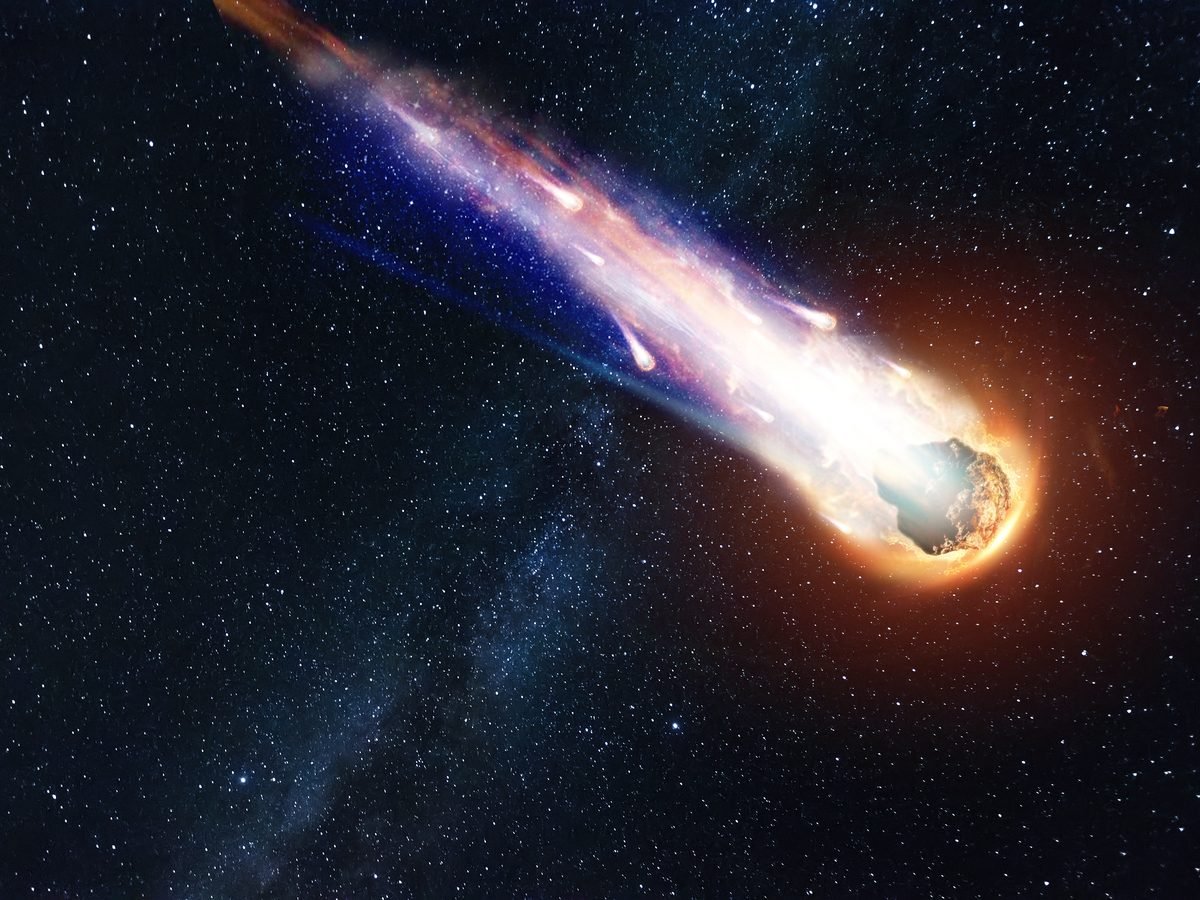This Is What Would Happen if a Meteorite Hit the Earth
We asked Robert Lamontagne, astrophysicist and the coordinator of the Centre for Research in Astrophysics of Québec, whether we really need to worry about what's flying through the sky.

Everything you need to know about meteorite impacts
Reader’s Digest Canada: If a meteorite were hurtling toward us, would we know ahead of time?
Robert Lamontagne: Yes. Even though the objects travel very fast, about 14,400 kilometres per hour, Spacewatch telescopes can detect the largest among them. Extraterrestrial materials don’t move in a straight line across infinity, but rather follow elliptical or parabolic trajectories. By studying their orbits, we can estimate the risk they represent. We’ll also know exactly when they’ll hit Earth.
Is there a greater risk of a strike during the Perseid meteor shower?
No, the Perseids recur every year without being dangerous. The reality is that the vast majority of extraterrestrial materials that could impact Earth are monitored. If a large meteorite—which is called a “near-Earth object” when its orbit crosses ours—were at risk of colliding with our planet’s surface, we would know several years in advance and have time to prepare.
Okay, so if we did get hit, what would happen then?
If a one-kilometre meteorite were to hit Montreal, the city would be completely wiped off the map. The size of the resulting crater would be 10 to 20 times the diameter of the meteorite—so that’s a 10- to 20-kilometre hole at the impact site. But that’s not all. The shock of the collision would cause a tremendous earthquake of a Richter-magnitude greater than 10 that would end up affecting all of northeastern North America. If the meteorite were to hit water instead, it would create a large-scale tsunami.
After an impact, the airborne debris would block the sun’s light on most of Earth for months, if not years, and would also lower the planet’s temperature. In short, it would be a human and environmental disaster.
I guess we’re lucky that Earth doesn’t get hit very often.
Well, the fact is, we’re struck by approximately 10 to 100 tonnes of extraterrestrial materials every day. The shooting stars you see at night are small particles from space that break up as they enter the atmosphere, which causes them to generate a trail of light. Most of the objects are small, about the size of your thumb, but there are also larger ones. Sky-survey programs have identified close to 20,000 Earth-crossing asteroids in the past 30 years. In early 2019, these ongoing monitoring programs, which are a legacy of Ronald Reagan’s “Star Wars” defence plan, had found around 900 asteroids measuring over one kilometre in diameter.
In the 1998 film Armageddon, astronauts destroy a meteorite before it collides with Earth. Is this possible?
That’s totally unrealistic. There’s no way the bomb the astronauts plant could split an asteroid as big as Texas. It would be the equivalent of flicking a bus. But there’s always a bit of real science in films like this, and we could try to divert an asteroid that was making a beeline for Earth. There are a few possible methods. One involves hurling a white powder or paint on one side of the object’s surface to cool it down. Just a slight change in temperature would create a variance in trajectory that could be enough if we act early.
Our moon is covered in scars caused by meteorites. Could it be hit again?
It’s not any more likely to be struck than Earth. But because there’s no atmosphere around the moon, the impacts are more violent and remain visible. That said, most of the craters on the moon’s surface were formed about four billion years ago, when there was more debris floating around our young solar system.
Have you seen a meteorite up close?
Yes, I’ve had the opportunity to examine some, thanks to a friend who collects them. Generally speaking, they look a lot like any rock you find on the ground. But when you think about it, they’re actually bits of the universe that date back to when our solar system was formed and have been travelling all that time. For an astronomer, that’s very moving.
Next, find out what’s inside a black hole.



